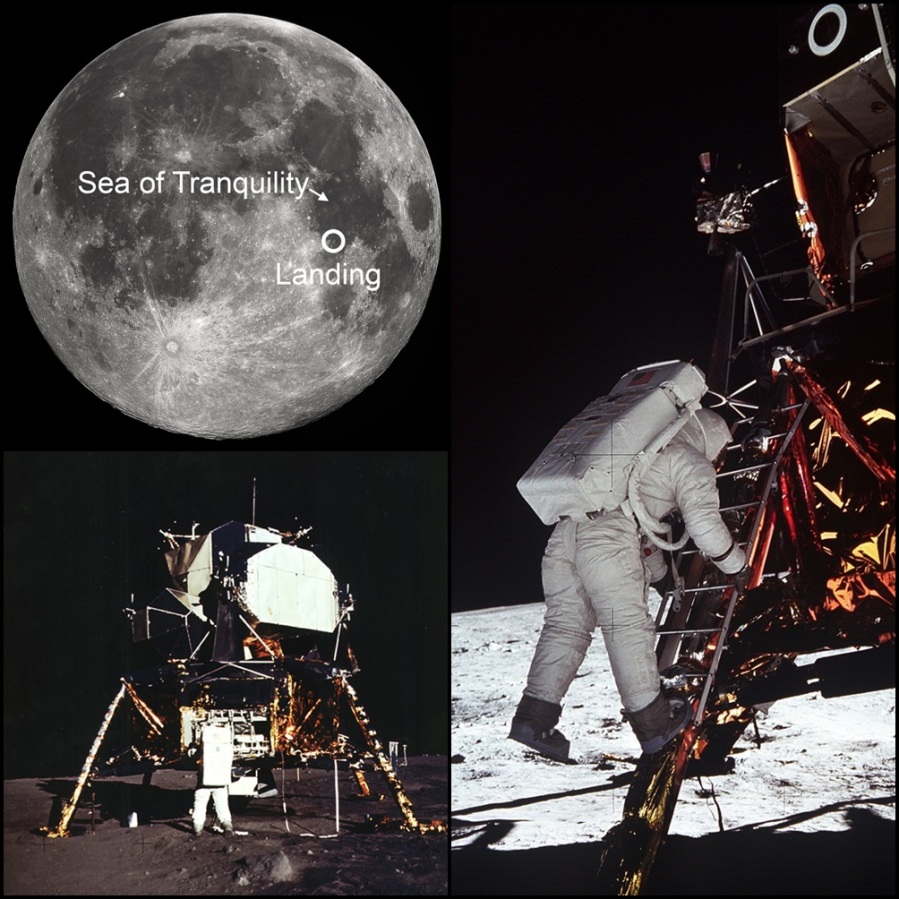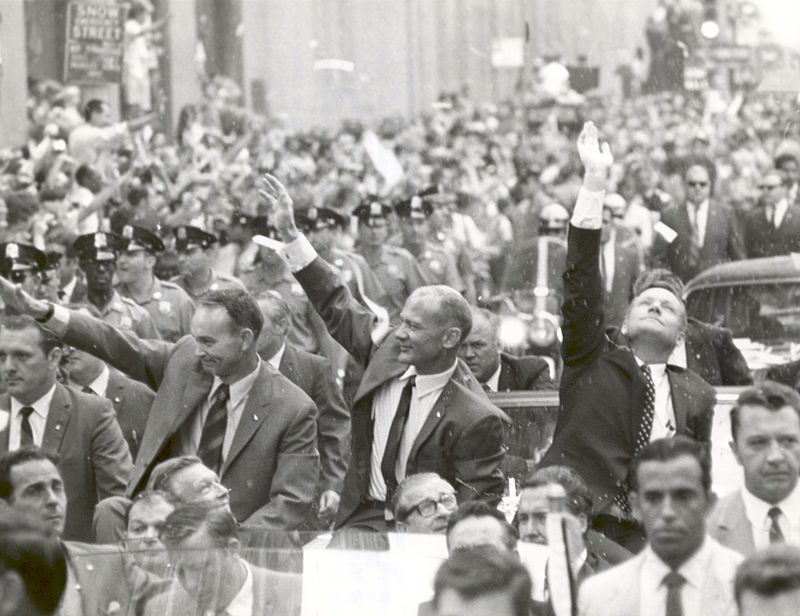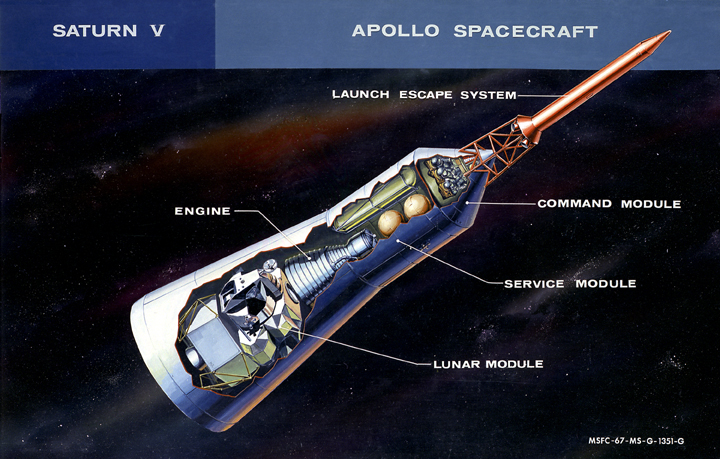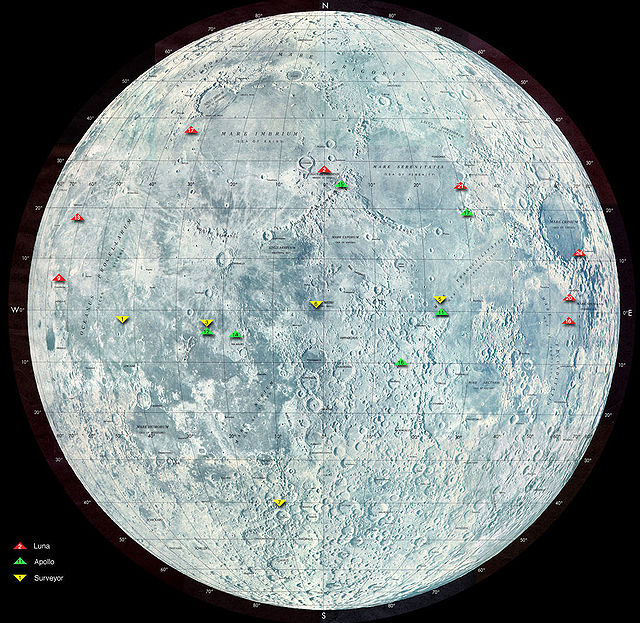APOLLO XI
July 20th, 1969 marks the 45th anniversary of man setting foot on the Moon for the first time. The mighty NASA Apollo XI Saturn V rocket launched from LC-39A at Kennedy Space Centre (Cape Kennedy, Florida) on July 16th, 1969 and transported Astronauts Neil A. Armstrong (Mission Commander), Edwin E. “Buzz” Aldrin (Lunar Module Pilot) and Michael Collins (Command Module Pilot) safely from Earth to the Moon three days later.

The Apollo XI insignia was designed by Astronaut Michael Collins to display a “peaceful lunar landing by the United States.” It depicts a Bald Eagle landing on the lunar surface, delivering an olive branch of peace.

LUNAR LANDING
The crew commenced an orbit of the Moon late in the afternoon of July 19th. The next day they were ready to board the 2 man Lunar Module (“Eagle“) and undock from the Command Module “Columbia“.


102 hours, 45 minutes and 40 seconds after launch from the Kennedy Space Centre the Lunar Module touched down on the Moon in the area known as the Sea of Tranquility. Neil Armstrong reported back to Earth “Houston, Tranquility Base here. The Eagle has landed.” Armstrong as mission Commander then became the first man to ever step on the lunar surface, where he uttered those famous words:
“That’s one small step for man, one giant leap for mankind“

Armstrong was followed onto the Moons surface by Edwin E. “Buzz” Aldrin who described it as “magnificent desolation“. During their 2.5 hour period on the Moon they collected 21.7 kilograms (47.8 pounds) of lunar rock and soil samples for analysis back on Earth and took a small number of photos to record the historic moment. Collins piloted the Command Module in orbit around the Moon throughout the lunar landing and exploration.


After returning to the Lunar Module and sleeping, Armstrong and Aldrin began preparations for the ascent back to the Command Module. 21 hours and 36 minutes after the historic Moon landing the “Eagle” began its ascent.
THE RETURN TO EARTH
The successful Apollo XI mission returned to Earth on July 24th, 1969. The United States had achieved an incredible step in space exploration and ultimately had won the Moon Race against the Soviet Union. The Soviets failed in their attempt to develop the manned N1 rocket to get to the Moon before them but they did launch an unmanned probe called Luna-15 on July 13th, 1969 that arrived in orbit of the Moon before Apollo XI. It was intended to collect lunar samples and return them to Earth before the Americans. Unfortunately for the Soviets it crashed about 2 hours before Armstrong and Aldrin had departed the Moons surface and the rest is history.



The Mobile Quarantine Facility (MQF) was a converted Airstream trailer kitted out with a living area, sleeping quarters, a bathroom and kitchen facilities. The air pressure inside the MQF was lower than that of outside. This along with an air filtration system maintained a safe level of quarantine. Today the Apollo XI MQF resides in the Smithsonian Steven F. Udvar-Hazy Centre in Chantilly, Virginia (an extension of the National Air and Space Museum in Washington D.C.)




SATURN V ROCKET
The Saturn V three stage rocket was designed by the Marshall Space Flight Centre (MSFC) under the expert guidance of Dr. Wernher von Braun specifically to take man to the Moon. It was the tallest, heaviest and most powerful rocket ever operationally flown. At 111 metres / 363 feet tall (equivalent to a 36 story building), fully fuelled it weighed 2.8 million kilograms (6.2 million pounds) and could deliver a Low Earth Orbit payload of 118,000 kilograms (130 tons) and take 43,500 kilograms (50 tons) to the Moon itself.

The first stage (S-IC) of the rocket had five Rocketdyne F1 rocket engines which provided a massive 7.6 million pounds of force thrust to get the Saturn V launched and through the first 61 km / 38 miles of ascent!



The second stage (S-II) of the Saturn V was designed to accelerate the third stage and its payload past the upper atmosphere. It was powered by five Rocketdyne J-2 rocket engines that provided 1 million pounds of force thrust.


The third stage (S-IVB) of the rocket pushed the Apollo spacecraft which contained the Command Module (crew quarters and flight control), Service Module (propulsion and spacecraft support systems) and the Lunar Module out of the Earths orbit and on its way to the Moon. It was powered by one Rocketdyne J-2 rocket engine that provided 225,000 pounds of force thrust.







